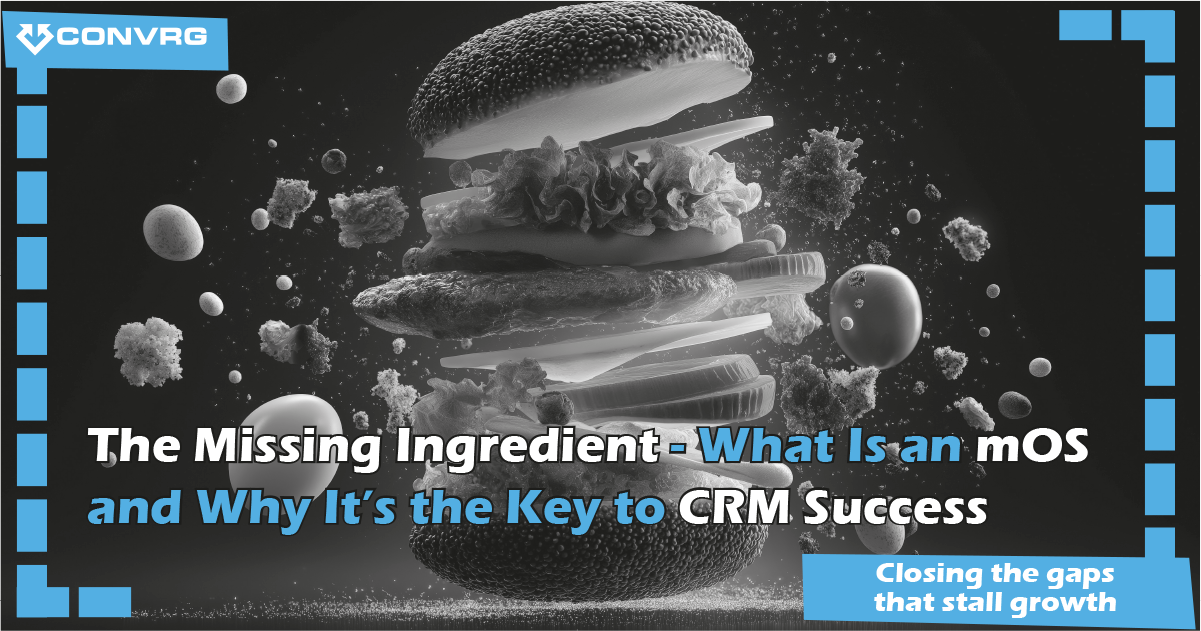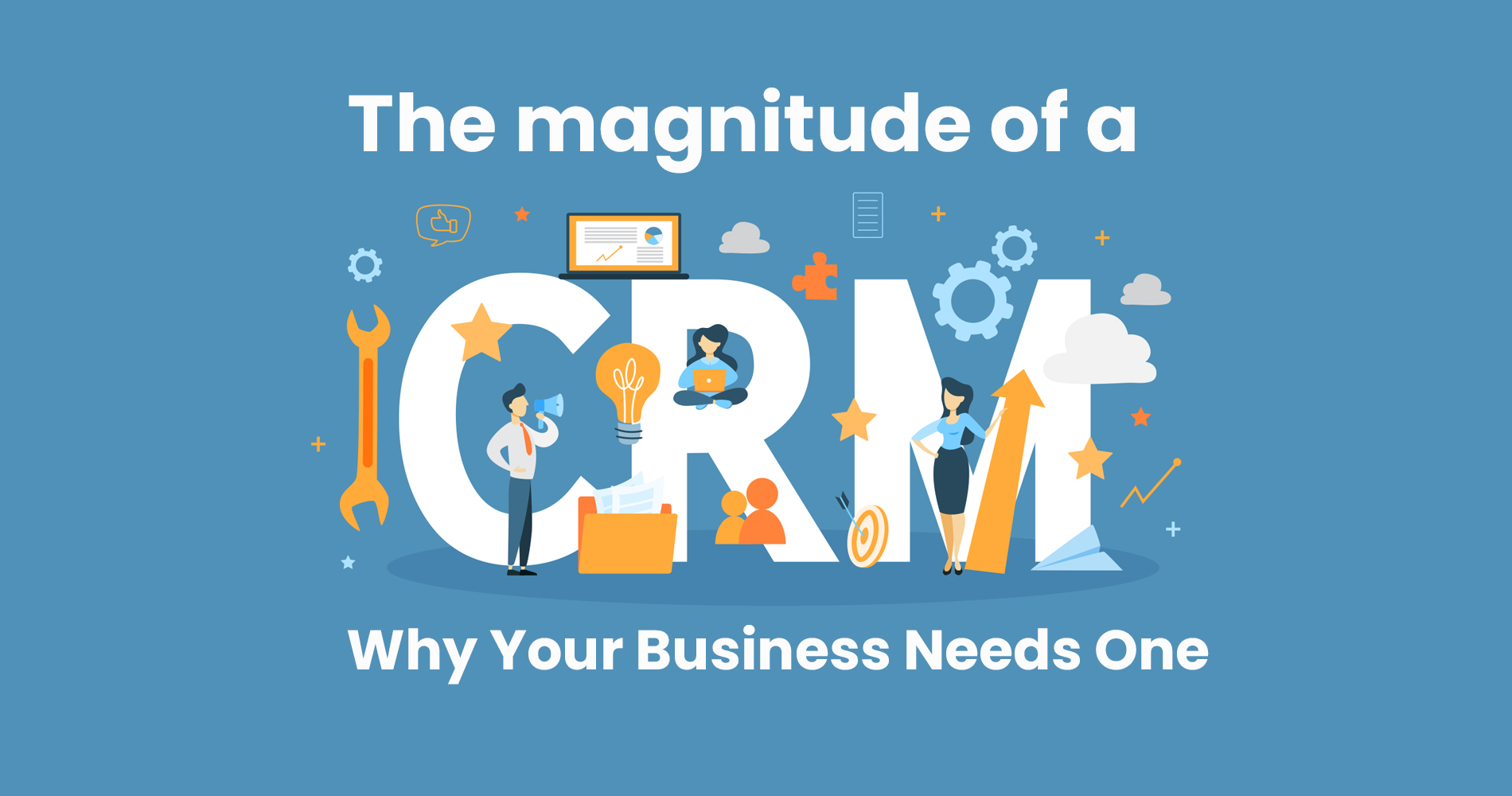Every business today relies on its CRM to manage customer relationships, track sales, and improve overall business efficiency. For many organisations, CRMs are essential tools for marketing, sales, and customer service teams. However, despite the vast benefits, many businesses still struggle to make the most of their CRM system.
If you're not seeing the results you expect from your CRM, you might be wondering why it’s not working. The truth is that the problem is likely not with the CRM tool itself - it’s probably because your business is lacking something fundamental: a Management Operating System (mOS).
An mOS is a structured framework that aligns your business strategy, systems, teams, and execution to work together towards a common goal. Without an mOS, even the most powerful CRM tool will struggle to deliver on its promises. The problem isn't the CRM; it’s the way your business is set up to use it.
In this blog, we will explore what an mOS is, how it supports CRM success, why it’s crucial for CRM adoption, and how the SIMPLIFI Framework can help you integrate an mOS into your business for CRM success.
What Is an mOS?
At its core, a Management Operating System (mOS) is a framework that integrates and aligns four key components of a business:
- Strategy
- Systems
- People
- Execution
An mOS is the "glue" that connects these components. It ensures that every part of the organisation is working toward the same goals and that the tools, including your CRM, are set up to facilitate those goals.
Let’s break down each component of an mOS and explain how it contributes to the success of your CRM:
- Strategy
A good CRM is about more than just managing contacts; it should be a strategic tool that aligns with your business goals. The first part of any mOS is to ensure that your CRM strategy is in line with your broader business strategy.
For example, if your company’s strategic goal is to increase customer retention, then your CRM should be focused on tracking interactions, monitoring customer satisfaction, and identifying opportunities for upselling and cross-selling. Your CRM should be a tool that drives the strategy forward, not just a repository of customer data.
- Systems
An mOS ensures that all systems in the business, including the CRM, are properly integrated. A CRM that operates in isolation from other systems - like marketing automation tools, accounting software, or inventory management systems - won’t be effective.
Imagine you run an e-commerce store and your CRM doesn’t integrate with your stock management system. If your CRM shows a product as "in stock" when it’s actually out of stock, you risk frustrating customers with incorrect information. An mOS ensures that all these systems talk to each other, creating a seamless flow of data.
- People
The people aspect of an mOS is perhaps the most crucial. Even the most advanced CRM systems can fail if your team isn’t trained or motivated to use them. An mOS aligns the behaviour of your teams with the business strategy and the tools they use.
In other words, an mOS ensures that your CRM is used by the right people at the right time. It’s not just about having your sales team use the CRM for tracking leads. An mOS ensures that customer service, marketing, and sales teams are all using the CRM consistently and that everyone understands the importance of keeping data accurate and up-to-date.
- Execution
Finally, execution is the stage where the rubber meets the road. An mOS ensures that the strategies and systems are implemented effectively. It’s about ensuring that CRM usage is operationalised, meaning the entire organisation is using the CRM as intended.
Without a proper execution plan, even the most strategic CRM system will fail. An mOS establishes the processes, workflows, and responsibilities for using the CRM system. For instance, an mOS might dictate that the sales team updates CRM records after every customer interaction, or it might specify that marketing teams use the CRM to trigger automated follow-up emails.
How an mOS Supports CRM Success
Now that we understand the core components of an mOS, let’s explore how an mOS specifically supports CRM success. In a business without an mOS, a CRM might be used inconsistently, data could be fragmented, and teams may not understand how to leverage the CRM for their goals. This leads to low adoption rates, poor data quality, and ultimately, the CRM is underused.
- Ensures Alignment Between Business Goals and CRM Usage
The primary reason most businesses fail to get the best results from their CRM is a lack of alignment. When a CRM is implemented without clear alignment to business goals, it becomes a tool for the sake of having a tool, rather than a strategic asset.
An mOS ensures that the CRM is aligned with the business strategy. For example, if your company is focused on improving customer experience, your CRM should be set up to track customer interactions, resolve issues quickly, and provide the sales team with insights into customer needs and pain points.
- Provides a Clear Framework for CRM Usage
An mOS defines who should use the CRM and how they should use it. Without clear guidelines, a CRM can become chaotic. Sales teams might enter incomplete or inconsistent data, and customer service teams might not use the CRM at all. This results in fragmented data, leading to poor customer experiences.
With an mOS, every team knows exactly how to use the CRM, and everyone follows the same procedures. This results in a CRM system that is consistent, reliable, and produces high-quality data.
- Improves Adoption by Creating a Unified Strategy
CRM adoption is a common problem for businesses, but it doesn’t have to be. If your CRM isn’t being used consistently across your teams, it’s a sign that your mOS might not be fully operational. An mOS creates a unified strategy for CRM adoption by setting clear expectations and offering the right support.
Training is an essential component of an mOS. Employees should understand not just how to use the CRM but also why it’s important for the business. When teams are aware of the strategic goals behind CRM adoption, they’re more likely to use it correctly.
- Maximises CRM’s Value by Integrating it into Daily Operations
When an mOS is in place, the CRM becomes a central hub of information that feeds into all aspects of the business. Sales, marketing, customer service, and management all access and use the CRM, ensuring that the business operates as a cohesive unit.
Real-World Examples of Businesses Using mOS for CRM Success
Example 1: SaaS Company in London
A SaaS company in London was struggling with CRM adoption. Sales teams weren’t updating records regularly, and marketing had no visibility into sales data. As a result, their CRM was underutilised, and customer data was fragmented.
They implemented an mOS that integrated the CRM with other business systems, such as marketing automation and customer support tools. This allowed the sales, marketing, and customer service teams to collaborate more effectively and share data seamlessly. The result? A 35% increase in CRM usage and a 50% improvement in lead conversion rates.
Example 2: Manufacturing Firm in the North East
A manufacturing company struggled with customer orders due to siloed systems. Sales, production, and customer service teams didn’t have a unified view of customer data, leading to order delays and customer complaints.
By implementing an mOS, the company integrated their CRM with their production system. This ensured that the sales team had real-time visibility into inventory levels, while the production team had visibility into customer expectations. The result? A 30% increase in on-time deliveries and a 20% improvement in customer satisfaction.
Why an mOS Is Crucial for CRM Adoption
CRM systems alone cannot drive business success - your organisation needs a comprehensive management framework. An mOS ensures that the CRM is effectively adopted across the business, integrated with other systems, and aligned with your broader business strategy.
Without an mOS:
- Data is fragmented across systems.
- CRM adoption is low across teams.
- Sales, marketing, and customer service teams are not aligned.
With an mOS:
- CRM usage is consistent and widespread.
- Data flows seamlessly across systems.
- All teams are aligned with business goals.
The Role of SIMPLIFI in Implementing an mOS
The SIMPLIFI Framework is the ideal tool for implementing an mOS. It aligns your CRM with business goals, ensures that your teams are using the system consistently, and integrates the CRM with your other systems. SIMPLIFI helps you build a clear, actionable roadmap for embedding an mOS in your organisation.
Conclusion: The Missing Link to CRM Success
Your CRM could be the most powerful tool in your business, but only if it’s supported by the right operating system. An mOS provides the framework that ensures your CRM is aligned with business goals, adopted across teams, and integrated with other systems.
If you want to unlock the full potential of your CRM, start by implementing an mOS. The SIMPLIFI Framework can help you do just that, ensuring that your CRM becomes a strategic asset that drives growth, efficiency, and success.






